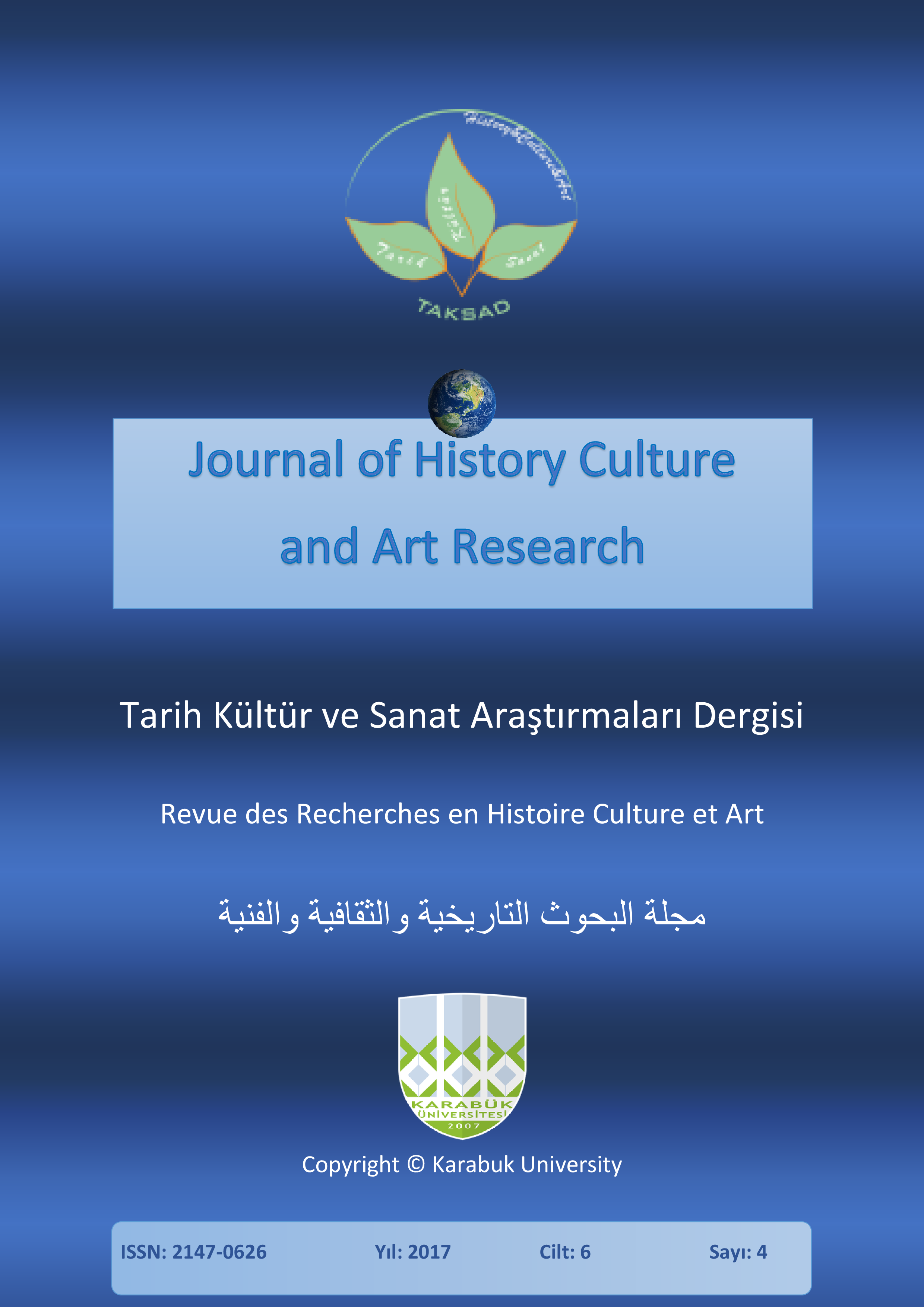Development of Cultural Construction and Constitutional Revolution in Iran
DOI:
https://doi.org/10.7596/taksad.v6i4.1136Keywords:
Cultural construction, Construction of political power, Iranian political change.Abstract
The subject of this article is the development of the cultural construction and the emergence of the Constitutional Revolution in Iran. This study, by examining the cultural structure of the Qajar era of the Naser-al-Din Shah period wants to investigate the cause of the Constitutional Revolution.
The findings of this research, which have been collected by historical-analytical method, indicate that the pattern of development in the Qajar era is consistent with the pattern of unbalanced development. In this sense, by starting educational, political and military reforms in the Qajar era specially Nasser-al-Din Shah, gradually the cultural structure apart from the traditional political structure. This development provided the basis for the emergence of new intellectuals and elites with new political ideas in the field of governance methods. However, the attenuation of political structure and the backwardness of political development from cultural development faced with some obstacles. Political system instead of creating a development along with gradual cultural development and consolidating its position through the persuasion of the community, in fact to maintain integrity in the social system was resorted to force and preferred force and compulsion to persuasion. The kind of reaction and opposition of the political power structure against the modern intellectual movement, which contained new political demands in the area of governance and freedom, led to the weakness and, finally, the collapse of the Qajar political system and the constitutional revolution.
References
Adamit, Fereidoun (1972). The Thought of Advancement and the Rule of Law of the Sepahsalar's Era. Tehran: Kharazmi Publishing.
Ashraf, Ahmad (1975). Historical Obstacles of Capitalist Development in Iran. Tehran: Zamine publications.
Bakhash, Shaul (1978). Iran: Monarchy, Bureaucracy & Reform under the Qajars, 1858-96 (St. Antony’s Middle East Monographs). New York: Ithaca Press.
Dolatabadi, Yahya (1983). Hayat Yahya. Tehran: Attar Ferdowsi Publishing.
Dougobino (1988). Dougobino Travelogue. Abdolreza Houshang Mahdavi. Tehran: Publishing of Ketabsara.
Ehtesham al-Saltaneh (1983) Memoirs of Ehtesham al-Saltaneh. Tehran: Zawar Publishing.
Etemad al-Saltaneh, Mohammad Hassan Khan (1965). Khalse famous in Khabnameh, by effort of Mohammad Katiraei. Tehran: Tahuri Library.
Haeri, Abdul Hadi (1984). Shiism and constitution in Iran and the role of Iranians living in Iraq. Tehran: Amir Kabir.
Hejazi, Fatemeh (1979). Constitutional Movement and Intellectuals Movement. Thesis. Tehran: Shahid Beheshti University.
Hosseini Fasaiy, Mirza Hassan (1988). Naseri's personal letters, Correction from Mansour Rastegar Fassaei. Tehran: Amirkabir.
Kasravi, Ahmad (1984). History of the Constitutional Revolution. Tehran: Amir Kabir.
Kazem Zadeh, Firouz (1975). Russian and English in Iran (1914-1864), Research on Imperialism. Trans. by Manouchehr Amiri. Tehran: Pocket Books.
Keddie, Nikki R. (1984). The Social Origins of the Iranian Revolution. Trans. by Abdolrahim Govahi. Tehran: Ghalam Publication.
Kermani, Seyed Abdul Hussein (1947). History of the Russian Revolution. Tehran: Sheikh Hassan Library.
Lambton (1984). The Government's Theory in Iran. Trans. by Changiz Pahlavan. Tehran: Publishing of Ketab Azad.
Mahboobi Ardakani, Hossein (1975). The History of New Civilization Institutions in Iran, 3rd., Tehran: Tehran University Press.
Makhber Al-Saltene Hedayat (Mehdiqoli Khan) (1982). Memories and Dangers. Tehran: Zawar Bookstore.
Malekom Khan, Mirza (1974). His life and efforts, by Ismail Rain. Tehran: Safi Ali Shah Press.
Malekom, Serjan (1988). Historical Iran. Tehran: Saadi, Beita.
Malikzadeh, Mehdi (1975). Date of Constitutional Revolution, 7th c., Tehran: Scientific publication.
Mohit Tabataba'i, Mohammad: Mirza Malkum Khan works, Tehran, Scientific publication, Beita.
Mostofi, Abdullah: A description of my life or a brief overview of the Qajar period, 3rd c., Tehran: Zawar Bookstore, Beita.
Nafisi, Saeed (1965). Political and Social History of Iran in Contemporary Period, 2nd., Tehran: Bonyad Publication.
Nizam al-Eslam Kermani (1262). The History of Iran's awakening, by the effort of Saeed Sirjani, 2nd., Tehran: Aqa Publications.
Rahmati, Farideh (1992). Cultural Context of the Constitutional Revolution. Thesis. Tehran, Islamic Azad University.
Reviewing in Iranian History after Islam (1984). Proceedings. Ya'qub Ajand, Tehran: Amirkabir.
Sassani, Khan Malek: Policy Makers of the Qajar period, Tehran, Hedayat Publishing, Bita
Sepehr, Mirza Taghi Khan (1974). Nasekh Al-Tawarikh, Qajar Sultan, 4th. Century, Tehran: Islamiyah Bookshop.
Sepehr, Mirza Mohammad Taghi (1974). Nasekh Al-Tawarikh, Qajar Sultan (4th ed.). Tehran: Islamic Bookstore.
Shamim, Ali Asghar (1963). Iran during the Qajar dynasty. Tehran: Scientific publication
Shirazi, Mirzasalah (1967). Ismail Ra'in Travel. Tehran: Rosen Publishing.
Tajbakhsh, Ahmad (1983). Tsarist Russia's Politics: England and France in Iran. Tehran: Iqbal Publishing.
Varharam, Gholamreza (1984). Political History and Social Organizations of Iran in the era of Qajar. Tehran: Moein Publications.
Watson, Robert Grant (1976). History of Iran in the Qajar period, translated by Vahid Mazandarani. Tehran: Simorgh.
Downloads
How to Cite
Issue
Section
License
All papers licensed under Creative Commons 4.0 CC-BY.- Share — copy and redistribute the material in any medium or format
- Adapt — remix, transform, and build upon the material for any purpose, even commercially.
Under the following terms:
Attribution — You must give appropriate credit, provide a link to the license, and indicate if changes were made. You may do so in any reasonable manner, but not in any way that suggests the licensor endorses you or your use.
- No additional restrictions — You may not apply legal terms or technological measures that legally restrict others from doing anything the license permits.







